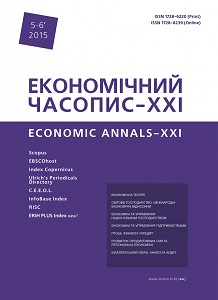Principles and problems of agricultural land rational use
Principles and problems of agricultural land rational use
Author(s): Anatoliy MoskalenkoSubject(s): Economy
Published by: Institute of Society Transformation
Keywords: Rational Land Use; Natural Fertility; Nutrient Balance; Structure of Land
Summary/Abstract: Introduction. A successful development of any economic system is the principle of available resources rational use. However, the practice of agricultural land use in Ukraine demonstrates significant problems that arise during implementation of its rational use. The purpose of the research is to examine current problems and prospects of agricultural land rational use in Ukraine. Key research findings. The author considers a variety of problems that form the concept of rational land use. In the present circumstances it is largely connected with the structure of agricultural land and humus and nutrients balance. Examples of solving such problems in the United Kingdom, Poland, USA, Hungary, and Sweden are given. The author gives his interpretation of rational land use essence as complex result of economic, social and environmental effect of the land use in human economic activities with its natural features preservation. In the article the author’s vision is proposed concerning the ways of rational land use formation in Ukraine based on maintaining soil fertility and optimal land resources and agricultural land structure. Conclusions and proposals. Firstly, the tendency to soil quality deterioration in Ukraine has continued for the past several decades. It has become particularly acute in the years of Ukraine’s independence. In fact, today the nation uses natural fertility of the soil, which should be safeguarded for future generations. Secondly, there is no real working mechanism through which the state would have an opportunity to influence those entities that violate the regulations on rational land use. Moreover, economic entities have no common data registry on soil quality. Thus, it is suggested to urgently create a state body (or empower the existing body) within the Ministry of Agrarian Policy and Food of Ukraine that would monitor soil quality in dynamics and have the authority to file claims to those producers who violate existing land use rules and regulations. Thirdly, a land owner should be interested in maintaining soil fertility himself. To do that, in addition to administrative, measures should be introduced in economic and legal spheres. The first of them may include land tax differentiation depending on crop pattern and crop impact on nutrients balance. In particular, areas under such crops as sunflower, coleseed, and grain corn may have a higher tax rate than sugar beet or fodder crops. The second group of measures should provide the formation of a transparent legal environment of land rights. This will ensure land owners’ confidence in the future, in their property rights, in the ability to transfer such rights to their descendants. Of course, it is not easy to create such a system of relations between the state and the commodity producer. But it should be a strategic goal for Ukrainian society.
Journal: Економічний часопис - ХХІ
- Issue Year: 151/2015
- Issue No: 05+06
- Page Range: 57-59
- Page Count: 3

